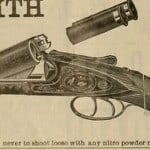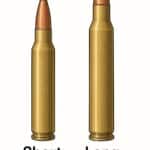
Edwin Wesson: Master Gunsmith and His Lasting Legacy
Few names in early American gunsmithing carry as much prestige as Edwin Wesson. Renowned for his precision craftsmanship, innovative firearm designs, and contributions to both target and hunting rifles, Edwin Wesson left an indelible mark on 19th-century firearms. Though his career was tragically cut short, his influence resonated far beyond his own lifetime, laying the groundwork for one of the most famous firearm manufacturers in history—Smith & Wesson.
Wesson’s Precision Rifles
Edwin Wesson was best known for crafting high-quality muzzle-loading target rifles. These rifles were meticulously designed for precision shooting, making them highly sought after by marksmen and competitive shooters of the time. Unlike mass-produced firearms, Wesson’s rifles were often custom-built to exacting standards, featuring long, rifled barrels, double-set triggers, and false muzzles—a unique feature designed to improve bullet alignment for unmatched accuracy.
These rifles came in a variety of calibers and barrel lengths, tailored to the specific needs of shooters. Their accuracy and durability were unmatched, leading many to consider them some of the finest percussion target rifles of the 19th century. Today, surviving examples of Wesson’s rifles remain highly prized by collectors for their craftsmanship and historical significance.
The Wesson & Leavitt Revolver: A Legal Battle with Colt
In addition to his exceptional rifle work, Edwin Wesson collaborated with Daniel Leavitt in the development of a revolutionary percussion revolver. The Wesson & Leavitt revolver, produced in the late 1840s by the Massachusetts Arms Company, was an ambitious design that sought to compete with the likes of Colt’s revolvers.
Manufactured in both .31 and .40 caliber, the Wesson & Leavitt revolver featured a distinctive rotating cylinder mechanism, which was advanced for its time. It also incorporated a spring-loaded loading lever for easier reloading. Despite its innovative design, the revolver quickly became entangled in a costly legal battle with Samuel Colt, who aggressively defended his patents on revolving firearms. Colt’s lawsuit ultimately succeeded in shutting down production, making the Wesson & Leavitt revolver a rare but significant piece of American firearms history.
Though the revolver itself did not achieve commercial success, it served as an important step in the evolution of American handgun design. The principles of craftsmanship and innovation displayed in Wesson’s revolver work would later be carried forward by his younger brother, Daniel B. Wesson, in his partnership with Horace Smith.
Edwin Wesson’s Death and His Influence on Smith & Wesson
Tragically, Edwin Wesson passed away in 1849, just as his career was reaching its peak. His untimely death left a void in the world of precision gunsmithing, but his legacy did not end there.
After Edwin’s passing, his younger brother Daniel B. Wesson assumed control of the business and continued making firearms in Edwin’s tradition. A few years later, Daniel partnered with Horace Smith, and in 1852, they founded Smith & Wesson, one of the most iconic firearm manufacturers in history. The principles of precision, craftsmanship, and innovation that Edwin championed lived on in Smith & Wesson’s revolvers, many of which became legendary in their own right.
The Collectibility and Legacy of Wesson’s Firearms
Today, Edwin Wesson’s rifles and revolvers are highly sought after by collectors, historians, and shooting enthusiasts. His long-range target rifles are regarded as some of the finest percussion firearms ever made, while the Wesson & Leavitt revolvers remain prized due to their rarity and historical significance.
Beyond their material value, Wesson’s firearms embody the golden era of American gunsmithing, a time when craftsmanship, precision, and durability were paramount. His work set a high standard for firearm design, influencing not just his contemporaries but also the generations of gunsmiths and manufacturers that followed.
Conclusion
Edwin Wesson was a true pioneer of American firearms design. His meticulous craftsmanship, innovative spirit, and dedication to excellence ensured that his rifles and revolvers stood the test of time. Although his life was cut short, his contributions continue to inspire, and his legacy remains deeply woven into the history of American firearms. Whether in the hands of collectors or admired in museums, Edwin Wesson’s guns serve as lasting reminders of a time when gunsmithing was both an art and a science.
The Smithsonian National Museum of American History has one of Ed Wessons Guns as part of it's collection. Learn more here.
If you know of any forums or sites that should be referenced on this listing, please let us know here.



